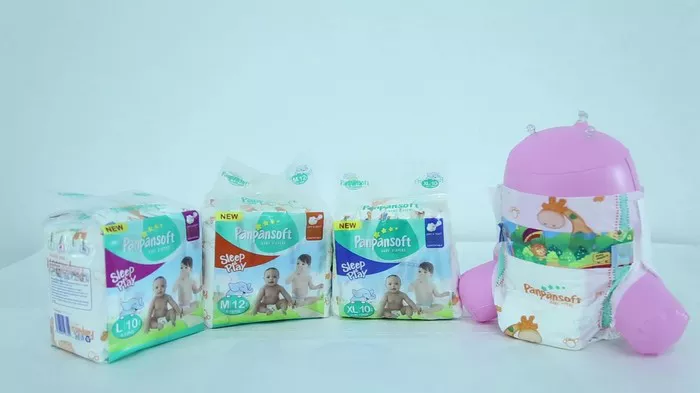Premature birth can be an unexpected and challenging experience for parents. In addition to medical concerns, they may also face the task of finding the right diapers for their tiny bundle of joy. Preemie diapers are specially designed to accommodate the unique needs of premature babies, offering a comfortable and secure fit while ensuring optimal care. In this comprehensive guide, we will delve into the world of preemie diapers, exploring their sizes, features, and important considerations for parents.
Introduction to Preemie Diapers
Preemie diapers, also known as premature diapers or preemie nappies, are specifically tailored to meet the needs of babies born prematurely. These infants typically weigh less than 5.5 pounds (2.5 kilograms) and have unique physical characteristics that require specialized care, including diapering. Unlike standard newborn diapers, preemie diapers are smaller in size and offer a snugger fit to accommodate the delicate proportions of premature babies.
Sizes of Preemie Diapers
Preemie diapers come in various sizes to cater to the diverse needs of premature infants. The sizing of preemie diapers is typically determined by the baby’s weight and waist circumference. Manufacturers may use different sizing charts, but the general range includes:
1. Micro Preemie: Suitable for babies weighing less than 1.5 pounds (680 grams). These diapers are incredibly tiny and designed to fit the smallest premature infants.
2. Preemie: Designed for babies weighing between 1.5 and 4 pounds (680 grams to 1.8 kilograms). Preemie diapers in this size range offer a snug fit without being too tight or restrictive.
3. Newborn: While not exclusively for premature babies, some newborn diapers are suitable for infants weighing between 4 and 6 pounds (1.8 to 2.7 kilograms). These diapers may provide a transitional option for babies who have outgrown preemie sizes but are still too small for standard newborn diapers.
It’s essential for parents to carefully consider their baby’s weight and measurements when selecting preemie diapers to ensure the best possible fit and comfort.
Features of Preemie Diapers
Preemie diapers are designed with several features to meet the unique needs of premature infants:
1. Soft and Gentle Materials: Preemie diapers are made from soft, hypoallergenic materials that are gentle on delicate premature skin. These materials help prevent irritation and minimize the risk of allergic reactions.
2. Adjustable Fasteners: Many preemie diapers feature adjustable fasteners, such as tabs or hook-and-loop closures, that allow for a customizable fit. This ensures a snug yet comfortable seal around the baby’s waist, preventing leaks and providing added security.
3. Wetness Indicators: Some preemie diapers are equipped with wetness indicators that change color when the diaper is wet. This feature helps parents and caregivers know when it’s time for a diaper change, making it easier to maintain good hygiene and prevent discomfort for the baby.
4. Umbilical Cord Cutout: For very small premature infants, some preemie diapers come with a specially designed umbilical cord cutout to protect the healing umbilical stump. This feature ensures proper airflow and prevents irritation around the umbilical area.
5. Absorbent Core: Despite their small size, preemie diapers are equipped with an absorbent core that effectively captures and locks away moisture. This helps keep the baby’s skin dry and reduces the risk of diaper rash and irritation.
6. Gentle Leg Cuffs: Preemie diapers often feature gentle leg cuffs that provide a secure seal around the baby’s legs without causing discomfort or leaving marks on the skin. This helps prevent leaks and ensures maximum containment of urine and stool.
7. Fragrance-Free: To minimize the risk of skin irritation and allergic reactions, many preemie diapers are fragrance-free. This makes them suitable for even the most sensitive premature skin.
Considerations When Choosing Preemie Diapers
When selecting preemie diapers for their baby, parents should consider the following factors:
1. Baby’s Weight and Measurements: As mentioned earlier, choosing the right size of preemie diapers is crucial for ensuring a proper fit and maximum comfort. Parents should carefully weigh and measure their baby to determine the appropriate diaper size.
2. Skin Sensitivities: Premature babies often have sensitive skin that is prone to irritation and rashes. Parents should opt for preemie diapers made from hypoallergenic materials and free from fragrances, dyes, and other potential irritants.
3. Absorbency and Leakage Protection: The absorbency of preemie diapers is another important consideration. Parents should look for diapers with a highly absorbent core that can effectively contain urine and stool to prevent leaks and keep the baby’s skin dry.
4. Ease of Use: Diapering a premature baby can be challenging, especially for first-time parents. Choosing preemie diapers with adjustable fasteners and other user-friendly features can make the diapering process easier and more convenient.
5. Medical Considerations: In some cases, premature infants may have specific medical needs that require specialized diapering products. Parents should consult with their healthcare provider for guidance on selecting the most appropriate diapers for their baby’s unique situation.
6. Cost and Accessibility: Preemie diapers can be more expensive than standard newborn diapers due to their specialized design and smaller size. Parents should consider their budget and the availability of preemie diapers in their area when making purchasing decisions.
Conclusion
Preemie diapers play a vital role in providing optimal care for premature infants. By understanding the different sizes, features, and considerations associated with preemie diapers, parents can make informed decisions to ensure their baby’s comfort and well-being. Whether it’s choosing the right size, selecting diapers with gentle materials, or considering specific medical needs, finding the perfect preemie diapers can help parents navigate the challenges of caring for a premature baby with confidence and ease.


